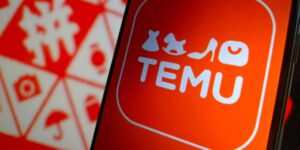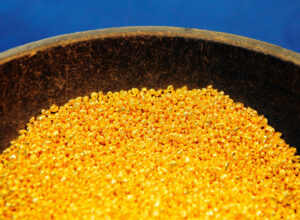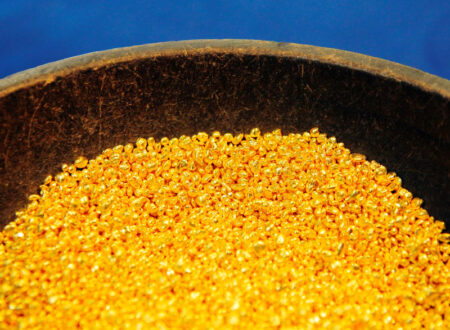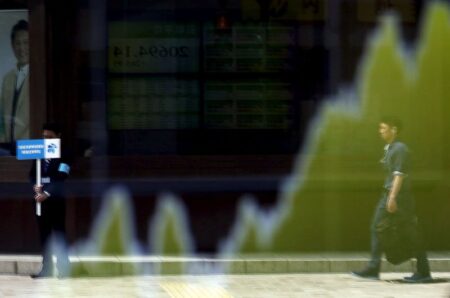Kawasaki Heavy Industries, Ltd. (KHI), a leading Japanese manufacturer, reported record profits for the first quarter of the fiscal year ending March 31, 2025, during its earnings call. Despite challenges in some segments, the company saw an overall increase in revenue and profits, attributed to favorable exchange rates and strong performance in certain divisions. Kawasaki maintained its full-year revenue and profit forecasts but raised its orders received forecast due to heightened defense-related demand.
Key Takeaways
- Kawasaki Heavy Industries achieved record first-quarter profits before tax and profits attributable to owners.
- Orders received for Q1 FY2024 were ¥456.8 billion, with revenue at ¥444.2 billion.
- The Aerospace Systems and Precision Machinery & Robot segment saw significant profitability increases.
- The Powersports & Engine segment experienced a profit decline due to a product recall and increased production costs.
- Full-year forecast for orders received revised upward by ¥50 billion to ¥2.41 trillion, primarily due to increased defense-related orders.
- The full-year revenue and profit forecasts remain unchanged, with a net debt-to-equity ratio target of 70% to 80% by fiscal year-end.
Company Outlook
- Kawasaki expects to maintain its revenue and profit forecasts for the fiscal year, despite the first quarter’s deviation from projections.
- The company aims to improve asset efficiency and achieve a net debt-to-equity ratio between 70% and 80%.
Bearish Highlights
- The Powersports & Engine segment faced a decline in profit due to suspended sales and increased fixed costs.
- The company recorded an increase in SG&A expenses, particularly in the Powersports and Engine segment.
Bullish Highlights
- The Aerospace Systems and Precision Machinery & Robot segment showed improved profitability and increased earnings.
- Operating cash flow improved by ¥46 billion, partly due to large advanced payments in the Aerospace business.
- Defense-related orders and Aero Engine performance were robust, contributing to the upward revision of the full-year order forecast.
Misses
- Kawasaki’s Powersports & Engine segment missed initial projections due to a recall and operational inefficiencies at a new plant in Mexico.
Q&A Highlights
- The company addressed the impact of exchange rate fluctuations and market dynamics on its financial outlook.
- Kawasaki discussed its initiatives to recover from the sales delays in the Powersports & Engine segment.
In summary, Kawasaki Heavy Industries reported a strong start to the fiscal year with record first-quarter profits, driven by favorable exchange rates and solid performance in key segments. The company has revised its full-year orders forecast upward due to increased defense-related demand but kept its revenue and profit forecasts unchanged. While there were challenges, particularly in the Powersports & Engine segment, Kawasaki is taking steps to improve its performance and remains optimistic about achieving its annual targets.
InvestingPro Insights
Kawasaki Heavy Industries (KHI) has demonstrated resilience with its record first-quarter profits and robust performance in key segments. The company’s strategic focus on profitable divisions and its ability to navigate market challenges are evident in its financial outcomes. Here are some insights based on data from InvestingPro that may provide additional context to Kawasaki’s financial health and stock performance:
- Kawasaki Heavy Industries operates with a significant debt burden, which is a critical factor for investors to consider when evaluating the company’s financial stability. Despite this, the company has managed to raise its dividend for four consecutive years, signaling confidence in its financial position and commitment to shareholder returns.
- The company’s stock has experienced volatility, taking a considerable hit over the last week and performing poorly over the last month. This may reflect investor sentiment and market reactions to broader economic conditions or specific events impacting the industry.
- In terms of valuation, Kawasaki’s P/E ratio stands at 21.91, with an adjusted P/E ratio for the last twelve months as of Q1 2025 at 21.21. The Price/Book ratio for the same period is 1.07, which could indicate that the stock is reasonably valued in relation to its book value.
InvestingPro also offers additional tips for those interested in a deeper analysis of Kawasaki Heavy Industries, which could provide further insights into its profitability, industry standing, and stock performance trends. There are currently 6 additional tips available on InvestingPro for Kawasaki Heavy Industries, which can be accessed at for investors seeking more comprehensive information.
Full transcript – Kawasaki Heavy Industries Ltd ADR (KWHIY) Q1 2024:
Katsuya Yamamoto: My name is Yamamoto. Thank you for your participation. Now I would like to present financial highlights. As announced today at 11:30 a.m. on the Tokyo Stock Exchange and on the Kawasaki website, our financial results for the first quarter of the fiscal year ending March 31, 2025, show that while orders received for the first quarter of fiscal year 2024 remained largely in line with the previous year. Revenue exceeded the previous year across all segments, setting a new first quarter record. Both quarterly profit before tax and profit attributable to owners of parent reached record highs for a first quarter, driven by increased revenue and favorable exchange rates. Regarding our full year forecast for fiscal year 2024, despite first quarter results deviating from initial projections in varying degrees by segment, we are only revising orders received upward due to strong defense-related orders. Revenue and profit forecasts remain unchanged. This concludes the overview. I will provide more details beginning on Page 3. For the first quarter of fiscal year 2024, we achieved orders received ¥456.8 billion, revenue of ¥444.2 billion, business profit of ¥16.9 billion and profit before tax of ¥25.8 billion. Profit attributable to owners of parent came in at ¥15.3 billion. As you can see, the weighted average exchange rate was approximately ¥21 weaker than that of the previous year, and U.S. dollar based transactions amounted to approximately $490 million. The breakdown of orders received. Revenue and business profit for each segment as shown in the chart. As shown in one, the Aerospace Systems and Precision Machinery & Robot segment significantly improved profitability and increased earnings. However, as indicated in 2, the Powersports & Engine segment saw a decline in profit due to the impact of suspended sales following a recall of off-road four wheelers as well as increased fixed costs associated with production expansion investments. Please see the chart for details. As shown in 1, while the gross profit rate has improved as a result of the yen’s depreciation and so forth, 2 indicates an increase in SG&A expenses. As a result, business profit increased by ¥6.6 billion year-on-year to ¥16.9 billion. On Page 6 of the income statement, as shown in 3, we recorded a foreign exchange gain of ¥12.9 billion. This is primarily due to the revaluation of receivables at the end of June when the exchange rate was significantly weaker than the weighted average exchange rate. Consequently, profit attributable to owners of parent increased by ¥6.2 billion year-on-year to ¥15.3 billion. Next, I will explain the factors behind changes in business profit. The depreciation of the yen against the U.S. dollar compared to the same period last year was a factor contributing to an improvement of ¥13.6 billion. Additionally, changes in sales composition, including strong performance in Aero Engines and appropriate price pass-through contributed to an improvement of ¥3 billion. However, SG&A expenses increased by ¥11.4 billion, primarily in the Powersports and Engine segment, resulting in business profit increasing by ¥6.6 billion year-on-year to ¥16.9 billion. Please refer to Page 8 for a detailed breakdown by segment. Please refer to the provided materials for details on the factors contributing to changes in assets at the end of this quarter. Regarding changes in liabilities and net assets, as shown in 3, while interest bearing debt has increased, the net debt-to-equity ratio has improved to 94.3% compared to the same period last year. We will continue to strive for improved asset efficiency to achieve our target net debt-to-equity ratio of 70% to 80% by the end of the fiscal year. As shown in 1, operating cash flow improved by ¥46 billion compared to the same period last year, resulting in a cash inflow of ¥23.6 billion. This was partly due to large advanced payments received in the Aerospace business. For reference, we have provided a chart showing the cash flow trends over the past 10 years. Regarding the fiscal year 2024 performance outlook, as mentioned earlier, the forecast for orders received has been revised upward from the previously announced forecast by ¥50 billion to ¥2.41 trillion. This is primarily due to anticipated increases in defense-related orders in the Aerospace business. However, we have maintained our previous forecasts for revenue and various profit metrics. We intend to assess the impact of exchange rate fluctuations, market dynamics in each business segment and the results of our initiatives throughout the first half of the fiscal year. This forecast is based on an exchange rate of ¥140 to the dollar, unchanged from our initial announcement. The breakdown by segment is shown in this chart. Detailed explanations will be provided on the individual segment pages. The slide shows the results for the first quarter of fiscal year 2024. Both defense-related orders and Aero Engine have performed well with revenue significantly exceeding the same period last year. We have raised our full year order forecast to reflect the increase in defense-related orders. This page provides the results of orders and revenue, the number of aircraft component parts sold to Boeing (NYSE:) and the number of jet engine component parts sold in Aerospace and Aero Engine, respectively, for your reference. This page shows the quarterly trends in revenue and business profit. Also provided for your reference, it gives an overview of past trends. This page outlines the current state of the business environment and order trends in the segment. It also presents specific efforts we are taking to achieve the forecast. No major changes have been made from the previous announcement. The slide shows the results for the first quarter of fiscal year 2024. Business profit has decreased compared to the same period last year. As noted in the materials, the cause of the deficit was a revision in the indirect cost allocation rate. This was anticipated in our initial plan and does not affect our full year performance outlook. Production and delivery are progressing smoothly on the R211 projects for the New York City subway, which is our largest source of revenue this fiscal year. We are steadily working towards achieving our full year forecast of ¥7 billion in business profit and a 3.3% business profit margin. This page shows orders received in revenue in the Japanese, Asian and North American markets. For your reference, it also shows revenue and after sales service, which has been a profitable business undertaking and the progress of the R211 project for the New York City subway in the U.S. This page shows quarterly trends in revenue and business profit for your reference. Regarding the business environment and order trends, we have noted the resumption of investment in railway cars in the domestic market. Other than this item, there are no changes from the previous announcement. The slide shows the results for the first quarter of fiscal year 2024. In terms of profit, equity and earnings of the associates remained strong, similar to the same period last year. Regarding the full year forecast, we have revised our forecast upward by ¥10 billion due to strong performance in defense-related business. Although both revenue and business profit in the first quarter exceeded our initial expectations, considering recent market fluctuations and the progress of initiatives, we intend to revise our outlook in the next financial report. This page provides a breakdown of orders received in revenue for the Energy, Plant & Marine Machinery business and the Ship & Offshore Structure business. This page shows quarterly trends in revenue and business profit for your reference. Regarding the specific efforts, in addition to our gas turbines already on the market for hydrogen co-firing power generation, we provide information on the development of large gas engines. Information on our business of ventilation equipment for underground shelters is also provided for your reference. The slide shows the results for the first quarter of fiscal year 2024 orders, revenue and profit all improved year-on-year due to a gradual improvement in the market environment. Profit increase was also due to price revisions in the hydraulic equipment business. There is no change to our full year forecast from the previous announcement. This page shows orders received and revenue for both the Precision Machinery & Robot businesses, revenue of hydraulic components to the Chinese market and the breakdown of robot revenue by segment are also provided for your reference. This page shows quarterly trends in revenue and business profit for your reference. Regarding the business environment, we understand that the semiconductor market is showing signs of recovery after bottoming out of demand. There are no other changes from the previous announcement. Regarding our first quarter fiscal year 2024 results, as shown in the slides, while revenue remained flat year-on-year, we saw a slight decrease in business profit. This was primarily due to the sales suspension of our key four wheeler model, the MULE PRO from May to July due to a recall issue. Furthermore, our plant in Mexico, which newly manufactures four wheelers and PWCs experienced periods of unstable power supply at the time of its startup and issues of employees’ proficiency, resulting in low operational efficiency. This contributed to performance falling below our initial projections. As the MULE PRO has already resumed sales and production at the new plant in Mexico has begun running smoothly, we anticipate production volumes to increase, allowing us to recover from the sales delays. We are maintaining our full year forecast as initially announced, and we believe there is a good chance of achieving our annual targets. This page shows revenue for motorcycles for developed countries, motorcycles for emerging markets, four wheelers and PWCs and general-purpose engines. For reference, we have also included regional sales volumes for motorcycles and sales figures for four wheelers and PWCs in the first quarter. This page shows quarterly trends in revenue and business profit for your reference. This page provides a market overview and describes the specific efforts in the Powersports & Engine segment. No major changes have been made from the previous announcement. Regarding shareholder returns, the planned annual dividend for this fiscal year remains unchanged at ¥140 per share, as previously announced. Here, I would like to report on four project topics. First, regarding our hydrogen business, which we are developing as a core next generation business, we have signed a memorandum of understanding with Daimler (OTC:) Truck, one of the world’s largest commercial vehicle manufacturers to collaborate on developing a liquefied hydrogen supply chain. This initiative aims to expand the use of liquefied hydrogen in road freight transport. It was made possible due to the high regard for our core technologies, including liquefied hydrogen terminals, maritime transport and liquefied hydrogen storage. This demonstrates our expanding role in growing presence in the global market. This page highlights the public demonstration run of our hydrogen powered motorcycle conducted as an event at Suzuka 8 Hours Endurance Race on July 20. As the world’s first mass production manufacturer to achieve this, we expect to see continuing growth in our hydrogen-related product line. Next, we would like to introduce our joint research with Kajima Corporation on Direct Air Capture, DAC, which is considered a promising approach to achieving carbon neutrality. This project aims to achieve negative emissions by absorbing and trapping CO2 captured through our advanced DAC technology and concrete construction materials to address the current challenges of CO2 storage facing DAC systems. We are committed to contributing to rapidly achieving carbon neutrality, not only through hydrogen supply chains but also by fostering partnerships in DAC technology. Lastly, we are pleased to announce that our indoor delivery robot, FORRO, has been officially introduced at multiple facilities, including Fujita Health University Hospital and Aichi Prefecture starting April 2024. A single FORRO unit can handle the workload of three delivery people, which we believe will contribute to reducing the burden on health care workers and improving operational efficiency. FORRO received the Japan Robot Association Award at the Innovative and Inventive Design Excellence Award, IDEA, for its capability to drive autonomously and safely and to share rides with others in an elevator. We have included the QR code in the slide that links to our official video. We encourage you to watch it for more information. The following pages contain supplementary information. This concludes the presentation. Thank you for your attention.
This article was generated with the support of AI and reviewed by an editor. For more information see our T&C.
Read the full article here
















